Titanium coated pans: pros and cons, selection and use
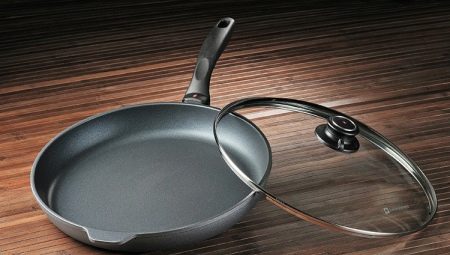
Among the huge variety of pans presented in shopping centers, it is not difficult to get confused. Nowadays, manufacturers offer cookware with coatings not only from popular polymers, but also from some other materials. One of the most common options is considered to be a non-stick titanium coating.

Peculiarities
Titanium is a fairly strong, yet lightweight metal that can withstand elevated temperatures. It is corrosion resistant and versatile. This is a very expensive material, therefore, in its pure form, it is used only in industries where there is no other alternative - for example, in aircraft construction (some parts for aircraft are made from it) and in medicine (prostheses for heart valves are made from titanium).
Crockery is not made entirely of titanium, since the cost of such kitchen utensils would be so high that only a few units could afford such pots and pans. Therefore, most often in stores there is tourist cookware made of titanium alloys - it is thin and light, optimal for use in field conditions, but it will also be a good option for home.
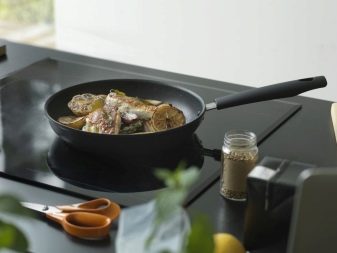
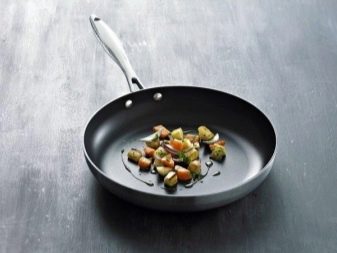
Usually, the body is made of steel, cast iron or aluminum, and only the inner surface is covered with titanium.
It should be borne in mind that there are no GOSTs and standards regarding non-stick titanium coating, therefore, each manufacturer independently determines with which additives to combine the metal to cover the pan.Some use compositions based on microparticles of titanium and Teflon, others make products based on ceramics, and still others bind metal to polymers.
For domestic use, titanium-ceramic utensils are best suited - the combination of two environmentally friendly materials is optimal for both frying food and baking them in the oven.

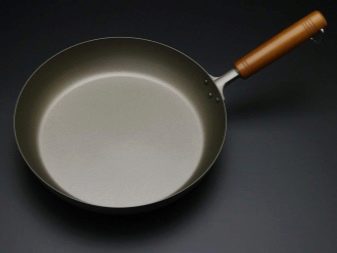
In any case, it should be understood the inscription on the dishes "titanium coating" is a marketing ploy; in practice, the doses of this metal are negligible.
Advantages and disadvantages
Cookware made of non-stick materials has many advantages, among them the following are distinguished.
- Due to their optimal thickness, pans with titanium spraying are characterized by good thermal conductivity, due to which the products are cooked quickly and are fried with very high quality.
- The surface is heated evenly, which significantly reduces the time for frying and stewing dishes.
- When using a titanium pan, there is no need to add vegetable oil or any other fat for frying, since the coating itself has non-stick properties.
- Titanium-coated products can be used on any hotplates - gas, electric and induction.
- Titanium kitchen utensils are easy to clean and dishwasher safe.
- Baking can be done in a dish with titanium dusting - the prepared dish easily lags behind the surface.
- Products of this type are characterized by wear resistance.
- Food cooked in a titanium-coated pan stays warm for a long time.



However, it was not without its drawbacks. As a rule, the most practical pans have a thick bottom and thick sides. Titanium pans are no exception - massiveness in many ways makes the product as a whole heavier, and this does not add convenience when working in the kitchen.
Popular brands
Let's take a closer look at the rating of the most popular manufacturers of titanium pans.
Tefal
The world famous French company has mastered the production of titanium pans, which are multifunctional. They allow high-quality frying and stewing of meat and fish products, as well as vegetables. In addition, very tasty pancakes and pancakes are obtained in the pan, each model has built-in special elements that allow you to regulate the temperature of the hob.
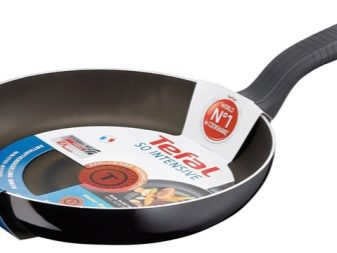
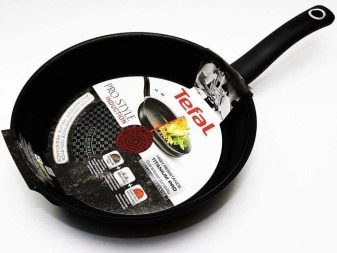
Usually, with proper use of the frying pan, the service life of such models is 5-9 years.
"Neva-metal-dishes"
These are products of a domestic manufacturer, which in their technical and user properties are in no way inferior to the frying pans of the French brand. It is important to note that this enterprise produces a wide variety of titanium-coated kitchen utensils, they are distinguished by a thick-walled surface and increased strength. Such products have a fairly high resistance to mechanical damage and serve for at least 4-7 years.
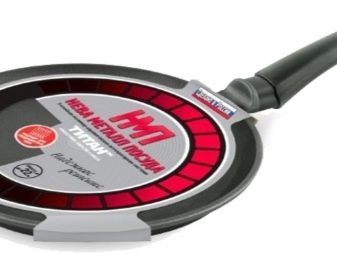
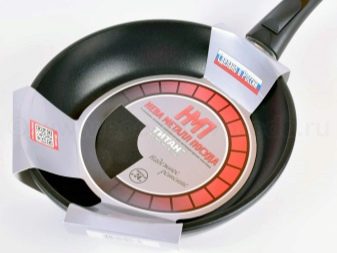
Rondell
A German company that has launched the production of aluminum cookware with a titanium heat-resistant coating. Such products are distinguished by their light weight and ease of use. Food does not burn on them and does not stick during cooking.
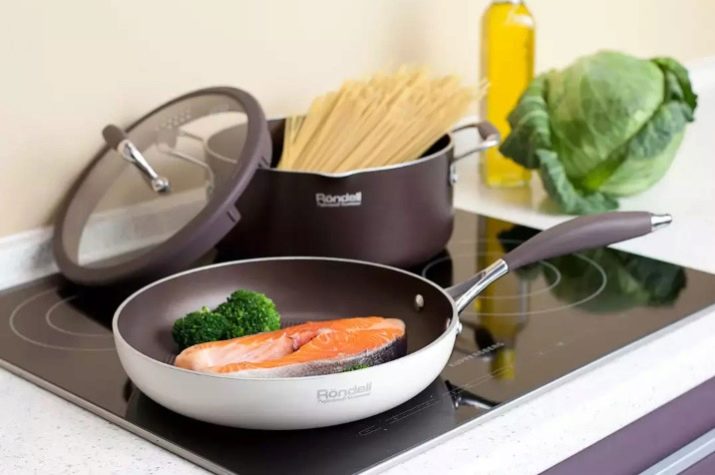
How to choose?
Non-stick coating, including titanium, is a very important fact for a frying pan and is, without a doubt, one of the basic criteria in choosing. However, this indicator is far from the only one that needs to be taken into account when assessing the practicality and durability of a product.
There are a number of other factors to consider when choosing a cookware.
- Bottom thickness. It is well known that the longer a frying pan has to stand on a heated surface, the thicker its bottom should be. So, for frying meat and fish, the minimum permissible thickness is 5 mm.
- The size. In this case, it follows from the characteristics of the burner and the volume of dishes that you intend to cook in your new cookware.
- The bevel of the walls and the shape of the bottom. If you buy a frying pan mainly for frying, then it is better to use products with a flat bottom, and if stews appear more often in your menu, then it is better to give preference to dishes that are slightly rounded in the area of the sides.
- The form. The classic frying pan has a round shape, but in the arsenal of a good hostess there are both oval products (they are optimal for cooking whole fish) and square ones (they should be used for frying steaks and cutlets).
- A pen. It is advisable to purchase a model with a removable handle, since in this case you can use your dishes for baking food in the oven.


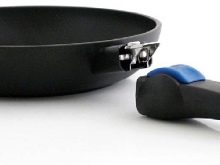
It is important to keep in mind that an induction hob requires a frying pan with a magnetic bottom. To select the desired product, just pay attention to the corresponding pictogram symbols on the bottom or packaging.
Pay special attention to the titanium coating itself. If it is not of high quality, it will simply crack in a month. To avoid the wrong choice, carefully inspect the coating and make sure its integrity and uniformity of application.

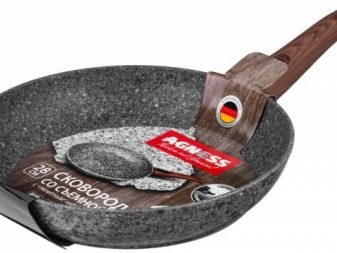
It is best to run your palm along the sides and bottom of the dishes - the surface should be smooth, the only exceptions are models that provide relief.
As we have already mentioned, various metal alloys and all kinds of materials are used for the production of titanium cookware. Each has its own peculiarities of use.
Non-stick pans made from aluminum are quite heavy cookware. Usually it is made with a thickened bottom and dense walls, most often their thickness varies from 5 to 10 mm. Thanks to its high versatility, the product can be used every day for preparing a wide variety of dishes. It does not change its shape, retains its performance characteristics when working on all types of hobs, including gas and electric.

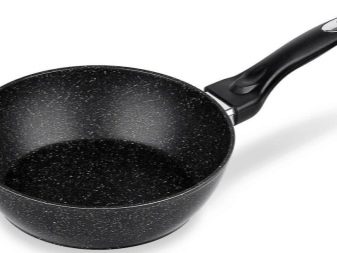
The titanium particle coating greatly simplifies the cooking process, since the food never sticks to the surface or burns.
The main advantages of aluminum frying pans include:
- increased strength;
- ease of care;
- corrosion resistance;
- utensils can be taken to prepare various products;
- the term of use is 10-25 years;
- the ability to withstand heating up to 400 degrees.
Such dishes also have their drawbacks, in particular the high price, especially when it comes to products with a thickness of about 10 mm. In addition, after preparing food, be sure to transfer the contents of the dishes to another container.
Stainless steel has a fairly quick warm-up and good wear resistance. However, the product is expensive, and besides, it is not suitable for cooking on induction surfaces.
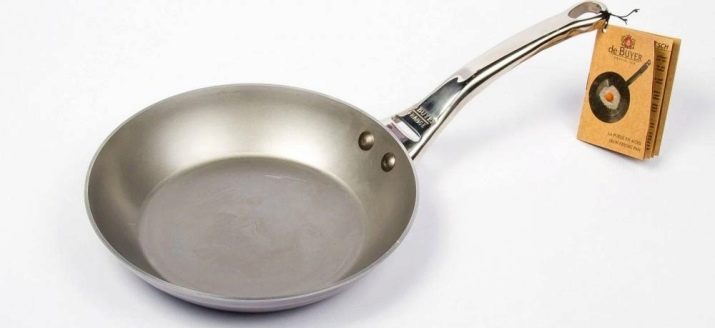
The titanium coating significantly increases the lifespan of these products, with some manufacturers even claiming that the pan, if handled properly, will last about eight decades.
However, keep in mind that if, along with titanium, the spraying contains nickel additives, it is better to refuse to buy such dishes., because when it is heated, oxidative processes occur, which makes food unsafe and can be harmful to health.
Cast iron pans are now common, as in Soviet times. The quality of food cooked in such dishes is exceptionally high. Such products can be used on any plate.
However, cast iron has a significant drawback - without coating, it quickly absorbs odors and remembers the aromas of cooking food, which is why it is important to make sure that such dishes are covered with a uniform layer of titanium spraying.

Cast iron pans have their downsides. They are heavy and more suitable for stewing than frying. But their cost, even with titanium sputtering, is relatively low.
Pans are often made from alloys, the best material is considered to be 72% steel, 10% nickel and 18% chromium.
Thanks to this combination, in combination with the titanium coating, the appearance of rust, which often occurs when preparing a large number of dishes, is minimized.

Operation and care
To ensure that your titanium coated pan lasts as long as possible, it is worth adhering to some recommendations.
- It is undesirable to use cookware in a strong heating mode. Ideally, the flame is low to medium.
- It is not recommended to use metal sponges or abrasives when cleaning the titanium-coated pan, as this will partially wear off the non-stick layer.
- Do not scrape with a fork or knife to remove pieces of stuck food. Such mechanical action quickly destroys the surface of the material.
- In order for the food to be fried evenly, you need to cook it with the lid closed.
- After cleaning, the product must be thoroughly wiped with a dry soft cloth.
- Immediately after purchase, before using for the first time, the dishes must be rinsed under running water with the addition of a gel-like detergent, after which they must be dried and wiped with slightly warmed vegetable oil. It is advisable to repeat this treatment once a month.
- Use wooden spoons and spatulas to mix food in containers during cooking.
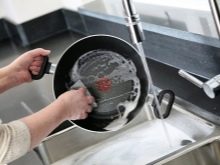
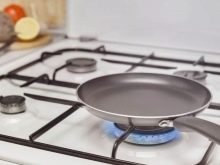

Putting all these tips into practice, you can maintain the performance of the cookware for several decades.
Reviews
Owners of titanium pans first of all note their high cost - the price tag for high-quality dishes starts at 3 thousand rubles. The larger the pan, the more expensive it is. For example, according to last year's data, a 7 cm high frying pan with a removable handle cost 4-5.5 thousand rubles, and a product with a diameter of 20 cm and a height of 5 cm cost a little less -3-3.5 thousand.
At the same time, as testimonials testify, titanium cookware is, first of all, reliability, practicality and durability and, most importantly, a guarantee of high-quality cooking. By overpaying for your pan today, you are making significant savings in the future.
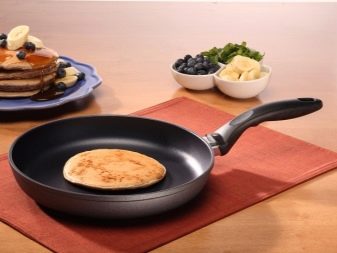
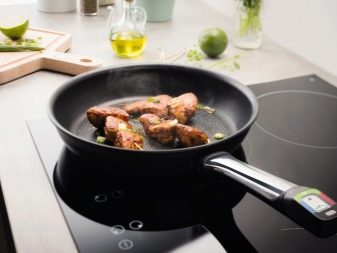
For information on how to choose a frying pan, see the following video.








